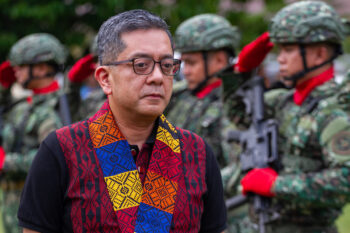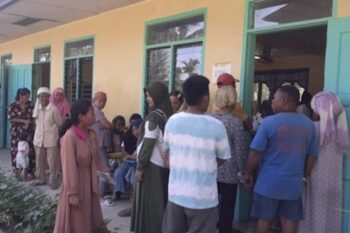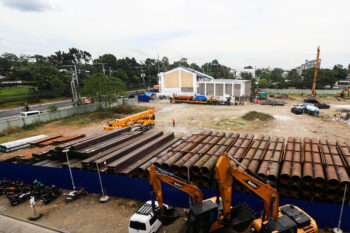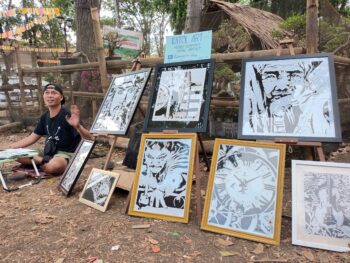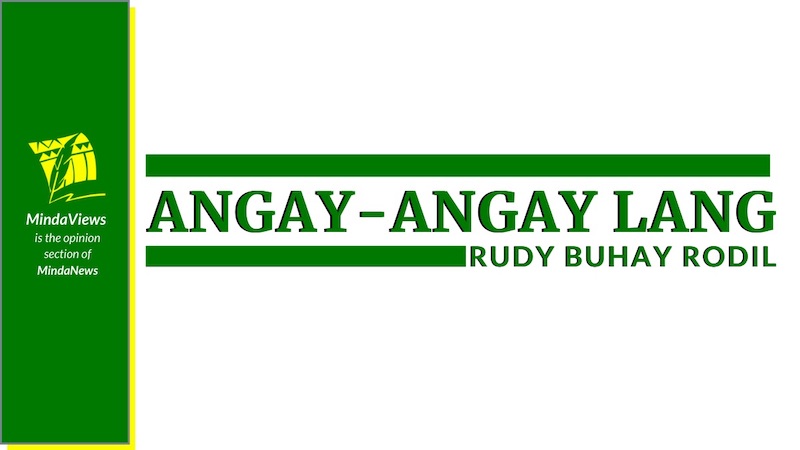
[My paper written in typewriter when I was a participant at the Eleventh Annual Seminar Session on Mindanao and Sulu Cultures, Dr. Peter Gowing Memorial Research Center, Marawi City April 15 to May 10, 1985; delivered at the First Assembly of Ranao Development Forum, 18-19 May 1985, Marawi City. Slightly revised.]
Relations with Other Lumad and Christian Populations
Part 5 of 6
ILIGAN CITY (MindaNews / 27 Oct) – To this day, it is not clear why the MNLF has included the other natives of Mindanao and the sympathetic Christians of the same area in their definition of Bangsamoro people. Nor is it comprehensible why their territorial claim includes Mindanao, Basilan, Sulu, Tawi-Tawi , and Palawan.
The assurances contained in the MNLF Manifesto of 1974, namely, “equal rights and protection with other citizens of the Bangsamoro Republik” and “their property shall be fully respected and the free exercise of their political, cultural and religious rights shall be guaranteed” are wonderful except they did not calm the anxieties created by the struggle. There is no known systematic move on the part of the MNLF to expound on these guarantees to the “other” two groups contained in the definition of the Bangsamoro people. Nor is there an organized attempt to involve them in the Bangsamoro struggle. Are these mere rhetorics?
But let us examine the historical basis of the territorial claim. At the height of the Muslim sultanates of Maguindanao and Sulu, all of Mindanao, Sulu and Palawan and North Borneo were divided between them. Sulu rules over Sulu, Basilan, Samboangan (roughly the site of the present Zamboanga City), Palawan and North Borneo. Maguindanao held sway over the rest of Mindanao.
It must be stressed that these two sultanates were feudal states that rule over their vast territories and the people therein. The relationship between the sultan and the subject peoples was that of vassalage, expressed generally through payment of regular tributes by the subject groups and through manpower assistance when the sultan is at war. The sultan in turn protected his subjects against external enemies. The feudal states’ claim to territorial sovereignty was based on this relationship of vassalage. Vassal communities, Muslims or non-Muslims, had their own respective ancestral territories which became encompassed within the sultanate’s domain as a result of their subjection.
By the end of the Spanish colonial regime, and as a result of the Spanish Moro war, large portions of the sultanates’ vassal-communities and their respective ancestral lands had been eroded. Through the use of force, the Spanish invaders took away Palawan and Samboangan from the Sulu sultanate; Zamboanga del Norte, portions of Zamboanga del Sur, Misamis (Occidental and Oriental and Iligan), Bukidnon, Butuan, Agusan, Surigao and Davao from the Maguindanao sultanate.
The American imperialists conquered the entirety of the Philippine archipelago and effectively put all the peoples therein under one centralized colonial government. Where the Americans left off, the Commonwealth and the Philippine Republic took over.
Philippine colonial history has wrought permanent damage to the two sultanates in at least three ways: the erosion of sultanates territorial domain; the split in the two-sultanate system; the creation of new loyalties and new identities among the former vassals of the two sultanates.
Now, the territorial domain of the Maguindanao and Sulu sultanates at the peak of their power can alone be the basis of the present MNLF claim, one based on ancestral rights as in the case with Moro ancestral lands, and on vassalage as in the case with lands occupied by the other (non-Muslims) tribal groups. It is therefore erroneous for the MNLF to claim the entirety of Mindanao, Basilan, Sulu, Tawi-Tawi and Palawan as Moro (Muslim) ancestral land. Their claim can now be rightly so-called to mean only those portions which are ancestrally theirs. And this does not include lands claimed as ancestral by non-Muslim Lumad (Manobo, Subanen, Bukidnon, Banwaon, Blaan, Bagobo, Teduray, Tagakaolo, Mandaya, Mansaka, T’boli, Ata, Mamanwa, Dibabawon, Higaunon, Matigsalug, Tigwa, Mangguwangan, Tasaday, Ubo, Talaandig, etc.). We may also add to this the legitimate claims to private portions of lands claimed by the Christian population, secured through valid purchase, occupancy, or exchange.
With the destruction of the former relations of vassalage and its replacements with new loyalties and new identities, there is now the big question of whether or not the Lumad, to take one example, would admit to being called Moros. The Christians for their part who have come to Mindanao carrying their own loyalties and identities will certainly require more than mere persuasion to adopt the Moro identity.
Tomorrow: The Need for a Model: Islamic State or Revolutionary Line?
[Si Prof. Rudy Buhay Rodil ay aktibong historyan ng Mindanao, tagapasulong ng kalinaw (Bisaya sa kapayapaan). Kilala siyang espesyalista sa paghusay ng mga gusot sa Mindanao-Sulu. Naging Komisyoner noon ng Regional Consultative Commision sa siyang nagbuo ng draft organic law ng Autonomous Region in Muslim Mindanao noong 1988. Dalawang beses siyang naging miyembro ng GRP Peace Negotiating Panel. 1993-1996, pakikipag-usap sa Moro National Liberation (MNLF), at noong 2004-2008 sa pakikipag-negosasyon sa Moro Islamic Liberation Front (MILF). Naging visiting propesor sa Hiroshima University, Oktubre-Disyembre 2011. Nagretiro noong Oktubre 2007.]

